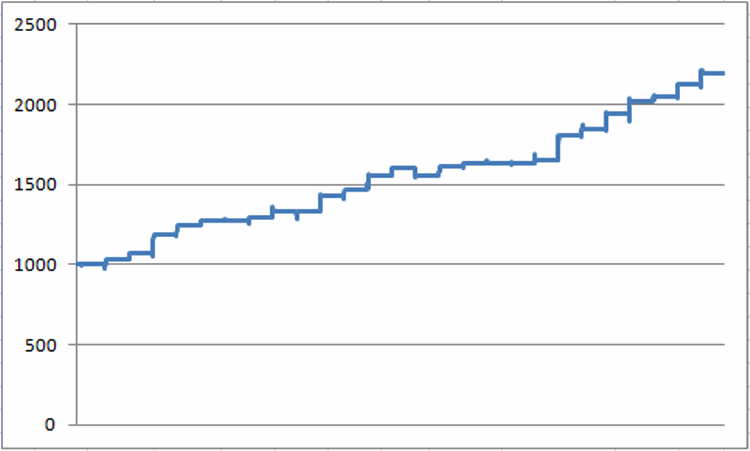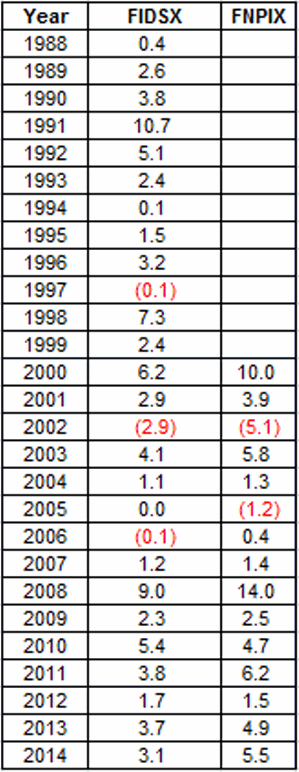Favorable Seasonal Period for Financial Stocks
*A favorable seasonal period for the financial stock sector tends to start at the close of the 11th trading day of December (12/15/15 this year)
*The favorable period extends through December 31st of the current year
We will use Fidelity Select Finance (ticker FIDSX) as a proxy for testing results. However, it should be noted that due to switching restrictions, FIDSX cannot actually be used to trade the method I am about to discuss. Fortunately other funds and ETFs are available and are listed a little later. But for now, Figure 1 displays that growth of $1,000 invested in FIDSX only during this mid-to-late December period described above since 1988.

Figure 1 – Growth of $1,000 invested in FIDSX during Seasonally Favorable Period (1988-2015)
Figure 2 displays the year-by-year results for both FIDSX (which has switching restrictions that would likely result in a 2.5% deduction if you actually used FIDSX to trade this method) and ticker FNPIX (ProFunds Financial). FNPIX started trading in 2000, has no switching restrictions and uses leverage of 1.5-to-1.

Figure 2 – FIDSX and FNPIX %+(-) during Seasonally Favorable Period (1988-2015)
For the record, during this period FIDSX has:
*Gained 24 times (89%)
*Lost 3 time (11%)
*Average % gain = +3.49%
*Average % loss = (-1.03%)
Since 2000 Ticker FNPIX has:
*Gained 13 times (87%)
*Lost 2 times (13%)
*Average % Gain = +4.77%
*Average % Loss = (-3.16%)
A Few Alternatives
Since FIDSX is not a viable trading alternative a trader might also consider
*ProFunds Finance fund (FNPIX)
*Rydex Real Estate fund (RYFIX)
*Financial Select Sector SPDR (N:XLF)
Summary
As always I need to point out two things:
1) This is not a “recommendation”. It is simply a presentation of information regarding a pattern that has held up reasonably well in the past (in this case “reasonably well” is defined as “89% winning trades and a 3.4-to-1 profit/loss ratio”).
2) There is never the slightest hint of a guarantee that any seasonal trend will play out “this time around” as well as it has in the past.
Still, as whoever said it first said it, Hey, 89% is 89%”
